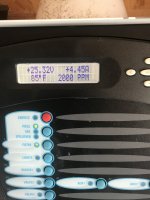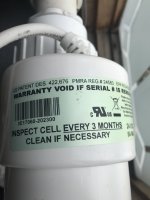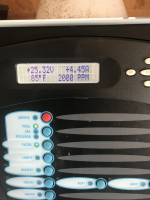At 75% I was still okay because I would still fall within the range of recommended amount as I would be at 3600PPM to get a reading of 2900PPM.
But now, even though I’m at 3600PPM, my reading is 2600PPm, which would mean Inwould need to bump up my salt to 3800PPM, which is above the recommended amount.
I also had my board repaired and don’t want to cause damage due to high salt.
Looking for input.
Also has anyone priced out a T-CELL-15 lately? Pretty crazy how much it increased in price.
But now, even though I’m at 3600PPM, my reading is 2600PPm, which would mean Inwould need to bump up my salt to 3800PPM, which is above the recommended amount.
I also had my board repaired and don’t want to cause damage due to high salt.
Looking for input.
Also has anyone priced out a T-CELL-15 lately? Pretty crazy how much it increased in price.






